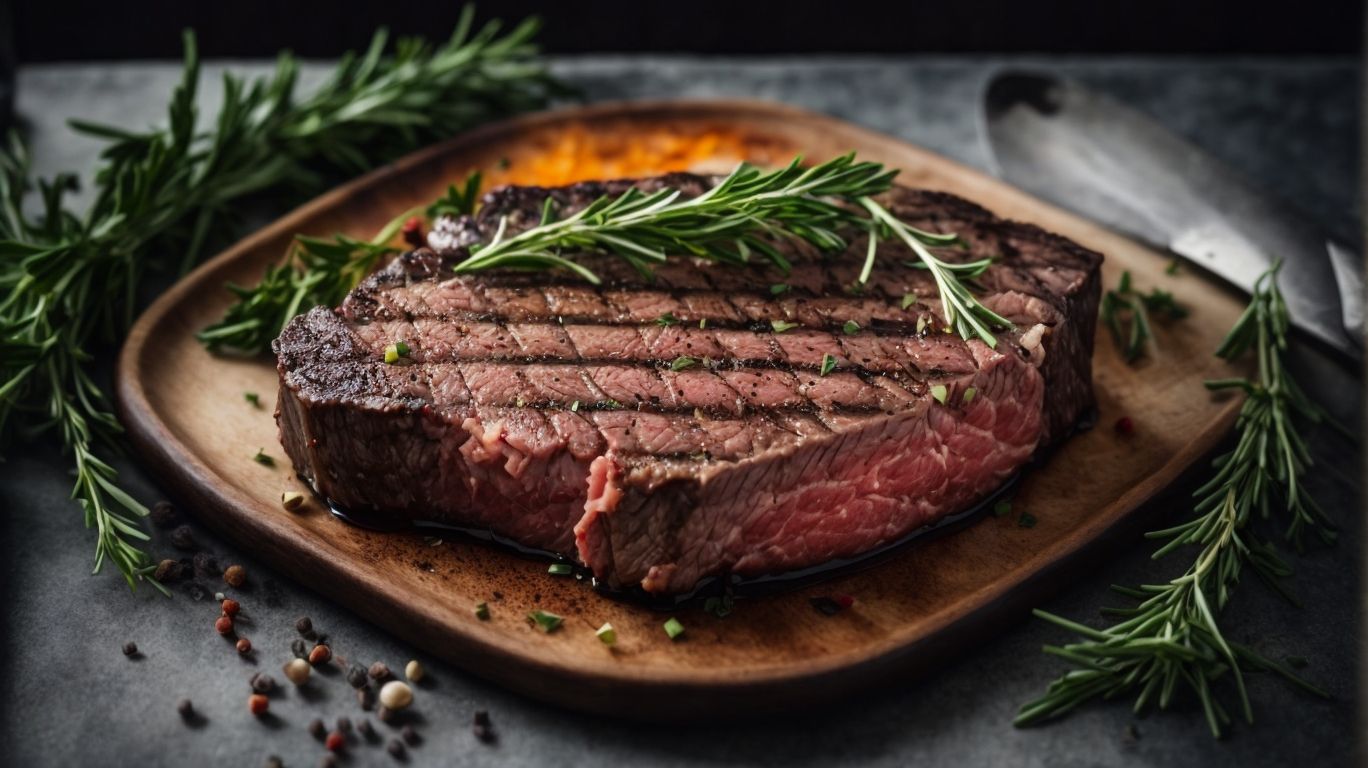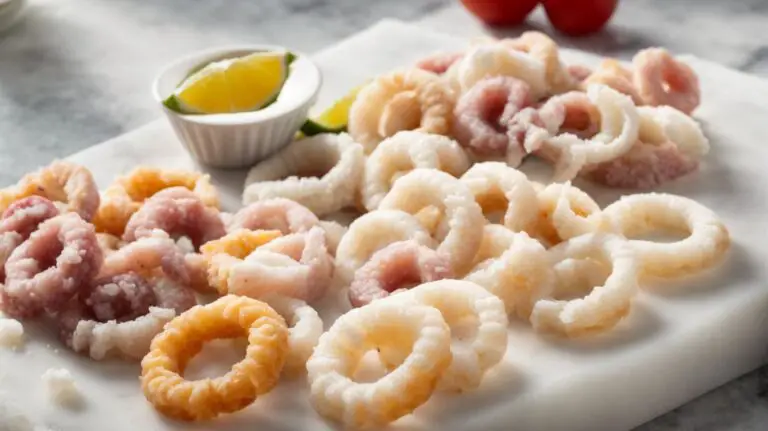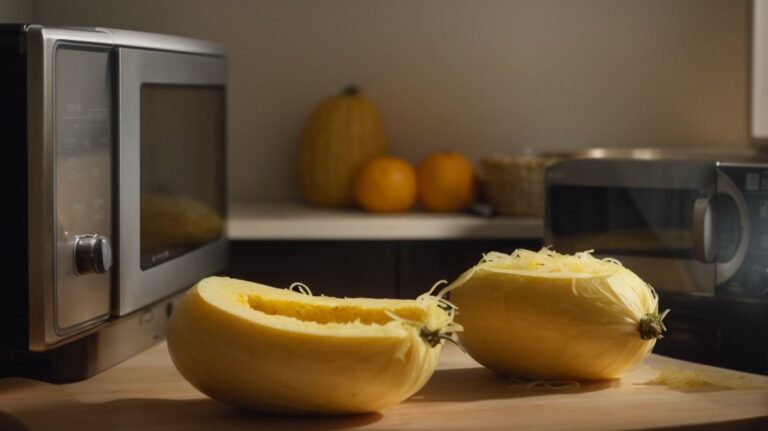How to Cook a Steak After Marinating?
Looking to take your steak game to the next level? Marinating your steak is a game-changer when it comes to enhancing flavor and tenderness.
We will explore what marinating is and why it is important, including the benefits, best ingredients, and methods for marinating steak.
Learn everything you need to know to cook up a perfectly marinated steak, including tips on how to know when your steak is done and more!
Key Takeaways:
What is Marinating and Why is it Important?
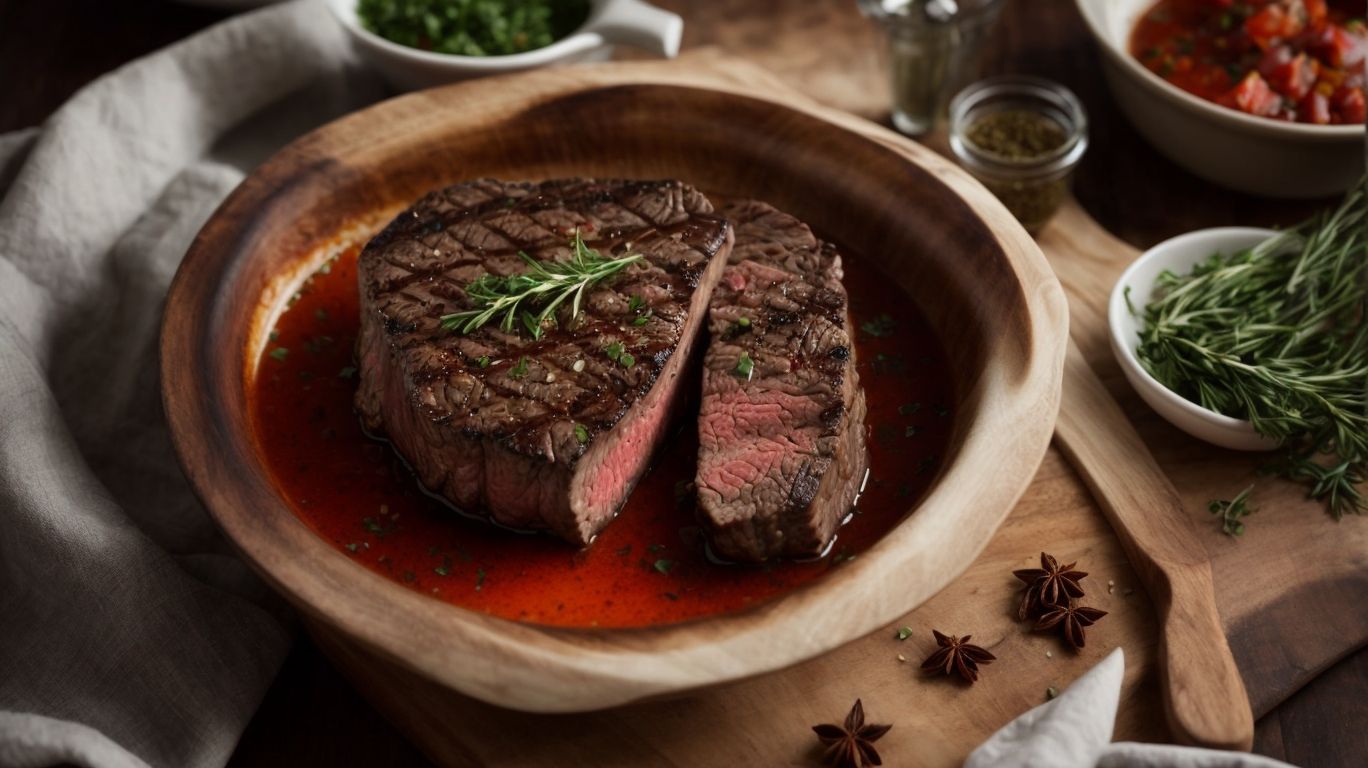
Credits: Poormet.Com – Adam Hill
Marinating is a technique where meat, such as steak, is soaked in a seasoned liquid to enhance its flavor, tenderness, and juiciness. It is important because it infuses the meat with different flavors while also helping to tenderize it.
By allowing the meat to sit in the marinade for a period of time, the flavors penetrate deep into the steak, creating a more flavorful and enjoyable eating experience. This process is not only about imparting taste but also about breaking down the muscle fibers, leading to a more tender texture. The acidity in marinades helps to soften the meat, making it more succulent and juicy when cooked. Marinating also acts as a natural flavor enhancer, giving the steak a well-rounded taste profile.
What are the Benefits of Marinating?
Marinating steak offers a multitude of benefits, including tenderizing the meat, enhancing its flavor profile, ensuring juiciness, and delivering delicious results.
By allowing the meat to soak in a flavorful blend of herbs, spices, oils, and acids, the marinating process not only breaks down tough fibers but also infuses the steak with a delightful taste that permeates every bite. This infusion of flavors not only enhances the natural taste of the meat but also adds layers of complexity, making each mouthful a culinary delight. Marinating helps to retain moisture within the steak, preventing it from drying out during cooking and ensuring a juicy and succulent texture that is truly satisfying.
How Long Should You Marinate Your Steak?
The ideal marinating time for steak varies depending on the recipe and desired flavor intensity, ranging from a minimum of 30 minutes to several hours to achieve optimal results.
When marinating steak, it’s essential to consider several factors to get the best results. If you’re using a citrus-based marinade, a shorter marinating time is usually sufficient as the acidity can break down the meat fibers faster.
For thicker cuts of steak like ribeye or sirloin, aim for at least 4-6 hours or even overnight to allow the flavors to penetrate deeply.
On the flip side, if you prefer a more subtle flavor, a shorter marinating time of 30 minutes to 2 hours may suffice.
What Ingredients Do You Need for Marinating Steak?
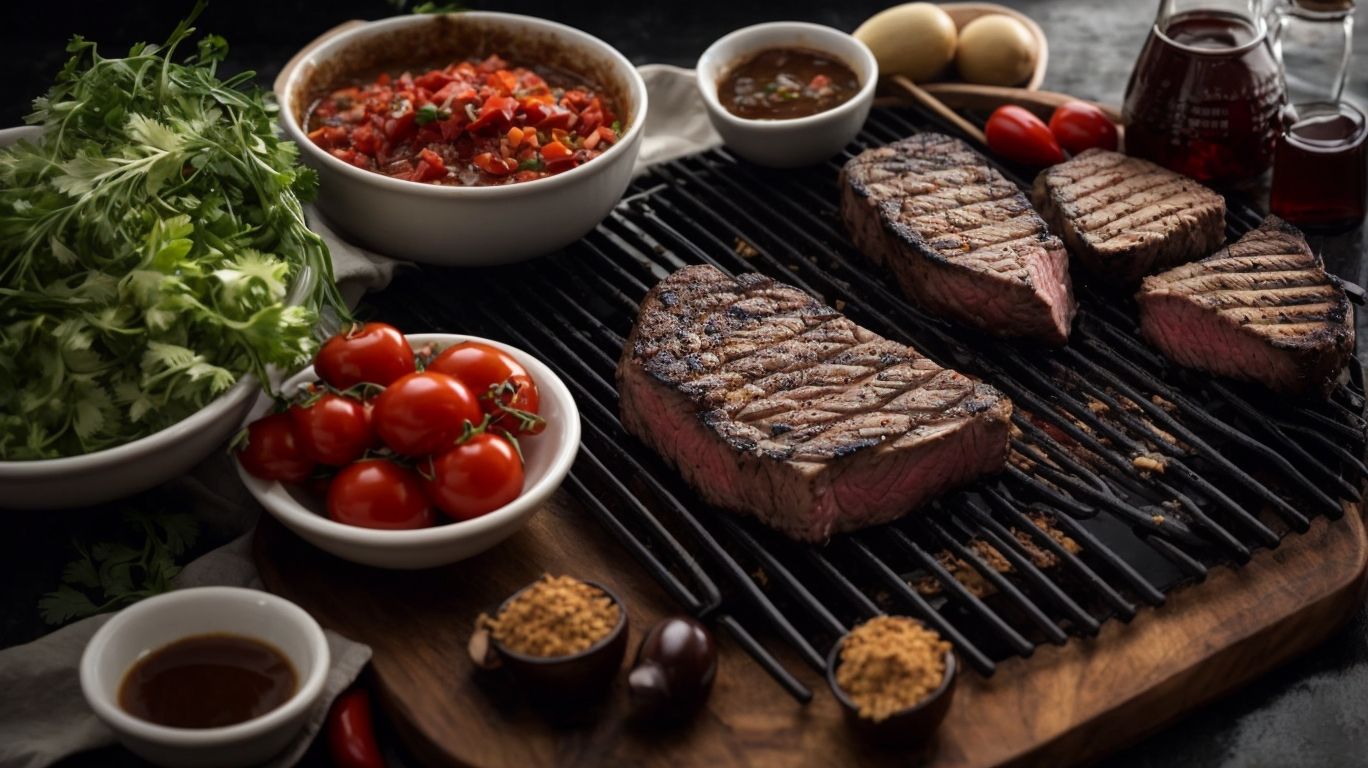
Credits: Poormet.Com – Randy Jones
To marinate steak effectively, you will require key ingredients such as a marinade (comprising seasonings, oils, and flavor enhancers) tailored to your taste preferences and desired outcome.
When selecting the seasonings for your marinade, herbs and spices are crucial for adding depth and complexity to the flavor profile. Common choices include garlic, onion powder, paprika, and cumin.
For the oil component, olive oil is a popular choice due to its mild flavor and ability to help distribute the seasonings evenly. Alternatively, you can opt for other oils like avocado or sesame oil for a different taste dimension.
Including an acid, such as citrus juice or vinegar, not only tenderizes the steak but also brightens the overall taste. Consider incorporating soy sauce for a savory umami element.
To elevate the flavors further, umami enhancers like Worcestershire sauce or fish sauce can add an extra layer of complexity to your marinade.
Experiment with different combinations of these components to find the perfect balance that suits your palate and complements the cut of steak you are marinating.
What Types of Marinades Work Best for Steak?
Various marinades excel in enhancing the flavor and tenderness of steak, with options ranging from acidic citrus-based blends to savory herb-infused concoctions suitable for high-temperature cooking methods.
Each type of marinade brings its unique touch to the steak, offering a burst of flavor that complements the meat’s natural richness. For those aiming for a zesty kick, a citrus-based marinade can impart a tangy and refreshing note to the steak before it meets the grill’s searing heat.
On the other hand, herb-infused marinades introduce a fragrant medley of basil, rosemary, thyme, and other herbs that infuse the steak with earthy undertones, taking your taste buds on a flavorful journey.
Opting for a savory marinade adds depth and complexity, with ingredients like soy sauce, Worcestershire sauce, and garlic melding together to create a umami-rich coating that caramelizes beautifully during cooking, enhancing the steak’s overall succulence.
How Do You Prepare the Steak for Marinating?
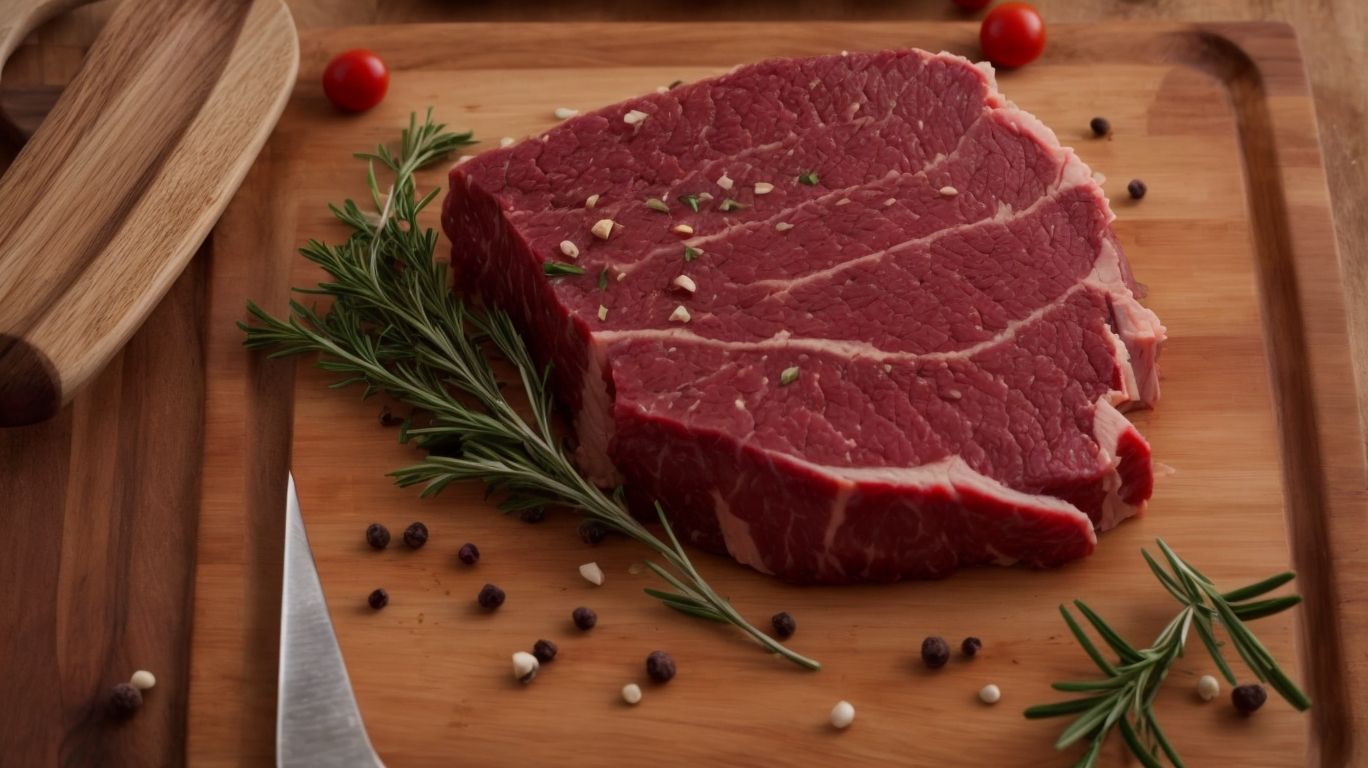
Credits: Poormet.Com – Nicholas Gonzalez
Before marinating the steak, it is crucial to clean and pat dry the meat, season it lightly, and place it in a suitable container to absorb the marinade effectively.
Start by rinsing the steak under cold water to remove any debris or excess blood, then use a paper towel to pat it dry thoroughly. Removing excess moisture helps the marinade adhere to the meat better.
Season the steak gently with salt, pepper, and any other desired spices. Ensure the seasoning is evenly distributed for a balanced flavor profile once cooked.
Choose a suitable container that allows the steak to lay flat in a single layer. This helps the marinade evenly coat the meat, ensuring each bite is packed with flavor.
What is the Best Way to Marinate Steak?
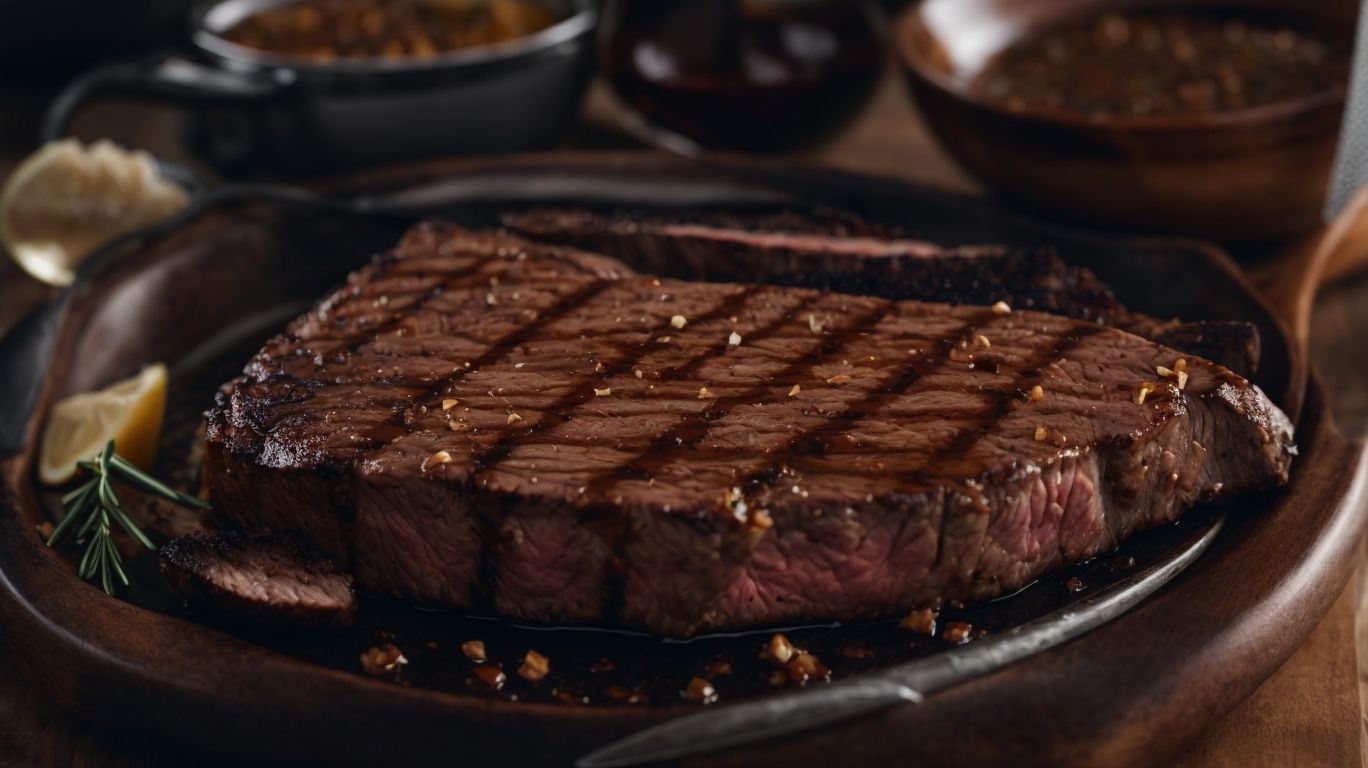
Credits: Poormet.Com – Matthew Young
The best way to marinate steak involves ensuring thorough seasoning, using a suitable container or sealable bag for marination, and employing techniques like basting to enhance tenderness and flavor.
In terms of seasoning, it’s essential to coat the steak liberally with a mix of your favorite spices and herbs. Allow the flavors to penetrate the meat by letting it marinate in the refrigerator for at least 30 minutes, but ideally a few hours or overnight for maximum taste infusion. Selecting the right container or sealable bag is crucial; avoid metal containers that can react with acidic marinades. Instead, opt for glass or food-grade plastic containers or heavy-duty resealable bags.
What Container Should You Use for Marinating?
Selecting an appropriate container for marinating steak is crucial, with options including glass dishes, resealable bags, or non-reactive bowls to handle seasonings and marinades effectively, especially when exposed to high temperatures.
Each container type offers unique advantages when it comes to marinating steak. Glass dishes are excellent for visual inspection and easy cleanup, while resealable bags provide airtight sealing, ideal for minimal marinade usage.
On the other hand, non-reactive bowls are perfect for acidic marinades, as they prevent any interaction that could alter the taste of the steak. Selecting the right container not only helps in maintaining the freshness of your marinade but also ensures thorough flavor incorporation into the steak.
Should You Flip the Steak While Marinating?
Flipping the steak during the marinating process can ensure even distribution of flavors and seasonings, providing consistent taste and tenderness throughout the meat.
When marinating your steak, think of flipping it as a way to essentially bathe each side of the meat in the delicious blend of seasonings and flavors. By turning the steak over, you allow the marinade to penetrate evenly and deeply into the fibers, ensuring that every bite is bursting with taste.
For best results, flip your steak at least once during the marinating time, which can range from 30 minutes to overnight, depending on the recipe. Some experts even suggest flipping the steak several times while marinating, especially if you’re marinating for an extended period.
How Do You Cook the Steak After Marinating?
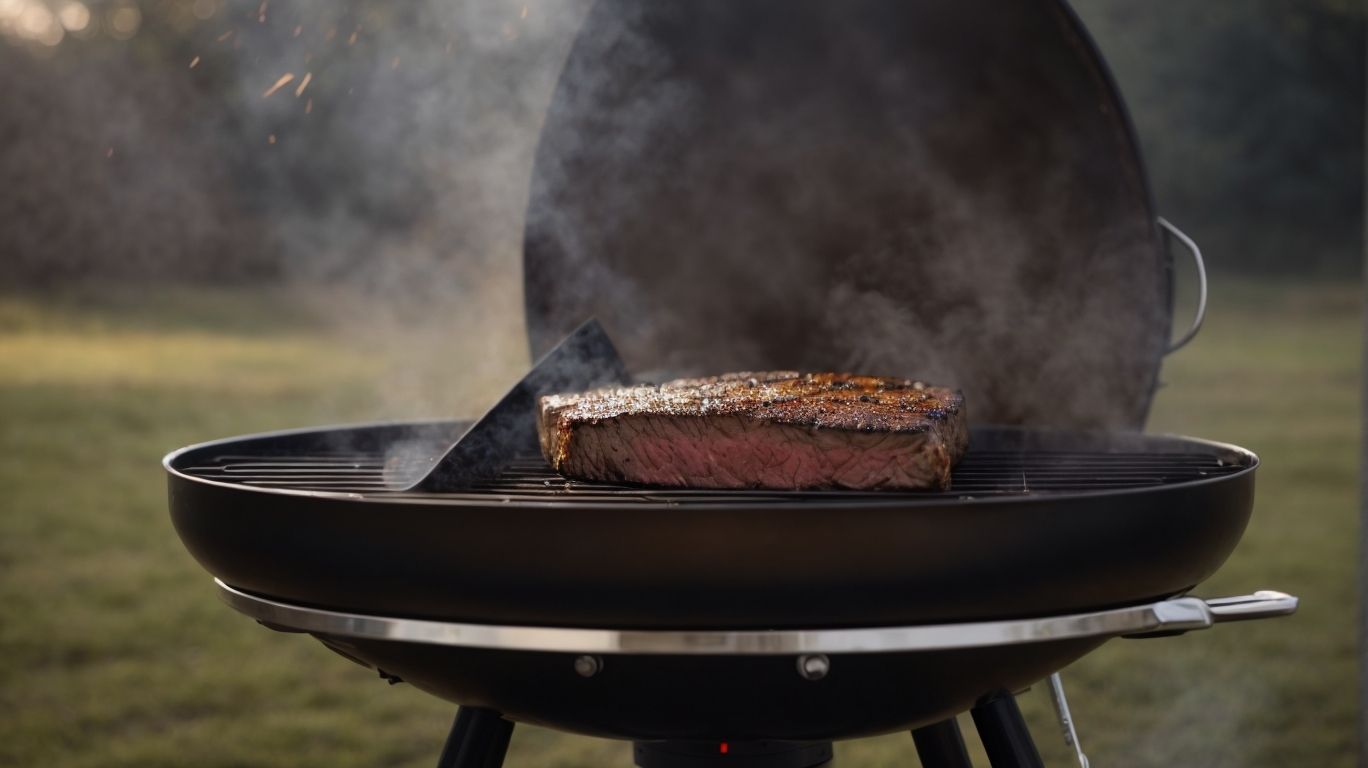
Credits: Poormet.Com – Jacob Jackson
After marinating the steak, cooking it over high heat for a few minutes per side can help achieve a flavorful and tender result, ensuring a juicy and delicious outcome.
In terms of cooking marinated steak on high heat, timing is crucial. Searing the steak for around 3-4 minutes on each side can create that perfect sear while keeping the inside juicy and tender.
Remember, the high heat helps to caramelize the sugars in the marinade, adding an extra depth of flavor to the steak. Ensuring your pan or grill is hot before placing the steak on it is essential for that beautiful sear and locking in those tasty juices.
What Cooking Method Should You Use?
Choosing the right cooking method for steak post-marination is crucial, whether it’s grilling outdoors for added smokiness or searing on a stove in a cast-iron skillet for a flavorful crust – pick your favorite method for delicious results.
Grilling steak after marination not only imparts a delectable smoky flavor but also creates those coveted grill marks that add aesthetic appeal. On the other hand, searing the marinated steak on a stove in a hot skillet locks in juices and forms a mouthwatering crust on the surface. For those who prefer a more hands-off approach, oven baking the marinated steak can result in juicy, evenly cooked meat with a rich infusion of flavors. Each method offers unique benefits and can cater to different preferences, making it essential to select the optimal technique based on your desired outcome.
How Long Should You Cook the Steak?
Cooking the steak for a specific duration at high temperatures, typically a few minutes per side based on desired doneness, is key to achieving tender slices that retain the marinated flavors effectively.
The exact cooking time required varies depending on the thickness of the steak and the cooking method being employed. A general rule of thumb is to cook a one-inch-thick steak for about 3-4 minutes per side for medium-rare doneness. For medium, aim for 4-5 minutes per side, and for well-done, you may need to cook it for 6-7 minutes per side.
Monitoring the internal temperature of the steak is crucial. For medium-rare, the thermometer should read around 130-135°F (54-57°C); for medium, aim for 140-145°F (60-63°C), and for well-done, it should be about 160°F (71°C).
What Temperature Should the Steak Be Cooked to?
Ensuring the steak reaches a safe internal temperature, usually around 145°F (63°C) to kill harmful bacteria, is essential for safe consumption post-cooking.
Cooking your steak to the right temperature not only enhances its flavors and texture but also plays a crucial role in food safety.
Monitoring the internal temperature during cooking is key to achieving the perfect doneness level. Using a reliable meat thermometer is highly recommended to accurately gauge the temperature.
Remember, different levels of doneness have specific temperature ranges. For example, a rare steak should be cooked to around 125°F (52°C), while well-done requires a temperature of 160°F (71°C).
By meticulously following these temperature guidelines, you can savor your steak with confidence, knowing that it’s safe to consume.
Tips for Perfectly Cooked Marinated Steak
Achieving perfectly cooked marinated steak involves essential tips such as allowing the steak to rest post-cooking, slicing against the grain for optimal tenderness, and following high-temperature cooking instructions precisely for flavorful results.
When letting the steak rest, cover it lightly with foil to retain its juices and ensure tenderness. For slicing, cut across the muscle fibers rather than parallel to them, which can result in a chewier texture.
In terms of high-temperature cooking, preheat your grill or pan adequately, sear the steak quickly to lock in moisture and flavor, and avoid flipping it excessively to maintain juiciness.
How to Know When the Steak is Done?
Determining when the steak is done involves visual cues such as sear marks, cooking time per side, and following recipe instructions meticulously to achieve a delicious and perfectly cooked outcome.
When grilling a steak, sear marks play a crucial role. These dark, caramelized lines on the surface indicate that the meat has been properly seared at high heat, locking in juices and flavor.
Adhering to the recommended cooking times for each side is essential. This ensures that the steak reaches the desired level of doneness, whether rare, medium-rare, medium, or well-done.
Following the recipe instructions carefully, regarding seasoning, resting time, and slicing against the grain, is vital for a delectable and mouthwatering result.

